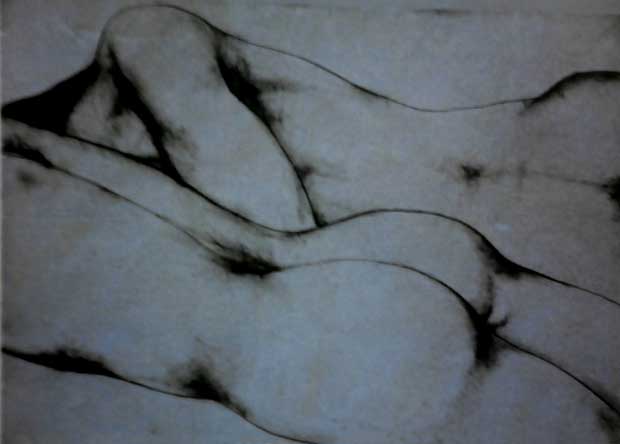The work of Servando Cabrera Moreno does not cease in its vitality. It bets and wins the distinction of perpetual seduction. Cuba is in his work as the artist in his island; he scrutinizes its history, its people, discover the pleasures inherent in the “hidden” beauty of the rude peasant, of delicate boys, heroes. Moreno Cabrera immortalized coupled torsos, figures that are woven with kisses and hugs.
He restlessly explored the human body and made him a sensual landscape. The virile human being, handsome, heroic remains the center of his work in each of its pictorial stages and he returned it to us eroticized returns us without overpious acts or vulgarities. For André Breton, Servando was “the most beautiful feather in the cap of Surrealism”.
Although no one could encapsulate the work of this versatile artist to a movement or trend only a very strong thread his work has: the human. The artist’s sensuality, excellent transparency, free brushstrokes, the precise drawing lines reaches in the erotic cycle that will occupy the entire decade of the 70, the pinnacle of his work.
Taboos, conservatism, rejection of change, the “other”, and the imposition of half-truths in 1971 prevented Servando from exhibiting his paintings at the National Museum of Fine Arts. Censorship meant for the artist the advance of what would later be called “Grey Five years”. The sample was banned and removed; thereafter the doors of the exhibition spaces that had hosted seven personal projects for ten years were completely closed.
His creations didn’t cease, however, it took some time for their re-emergence of his works in public. Such motives and desire for this creator to keep his paintings in the rooms and walls of his home, conditioned the unprecedented nature of most of his drawings.
Today some come to light in the Servando Cabrera Moreno Museum Library as part of the day for the 90th anniversary of his birth. Epiphany of the body is called the set of 34 pieces, a unique union of male bodies, gestures, sex, kissing, copulation, intercourse group, breaks, faces and repose. The first room brings together works from the period of transition to the eroticism.
Shortly before the end of the 60s, the artist makes great ink drawings in which already he warns the move to this later subject. In his paintings began to gain space big pubis and voluptuous sexes in an overlap with elements of nature, fruits or figures, some of them so similar and ambiguous that may be common to any person, regardless of gender.
Other areas show the body in disparate ways. No traps of facility and pamphlet delivery in Servando. The sensuality and eroticism of these paintings show a subtle and insinuating acuity where the faces are intended to transcend the material to accompany the visitor, liability, lasher, in his walk through the halls of Villa Lita.
This exhibition has the scoop of three works from the series The solitude of a self-portrait, commonly known as Birthday: Torch, Como un veintiocho de mayo and Como cruje la vida. Servando makes in 1977 in Europe, 54 drawings, one for each birthday to that date, perhaps as a prelude to his death. These works show excellent drawing technique, also sprout cardboard genders, stylized twisted bodies and limbs.
Three drawings are also exposed, such a material rarely used by the artist: the acrylic. The boys of Tirso de Molina, and Pedro el romano and Pepe Romero were made in Spain in 1978 and combine them in the background with erotic elements with the already characteristic androgynous faces. All these drawings are in the collection of the Museum Library and private collectors.
In his 58 years of life Servando participated in 109 group exhibitions and held 20 personal ones. Today he is one of the painters who sometimes enjoys the dangerous privilege of popularity. His guerrillas, Havana, couples in love, families and women join this erotic epiphany set to populate the entire catalog of images of Cabrera Moreno. A visual memory diversifies its author and reality itself.










